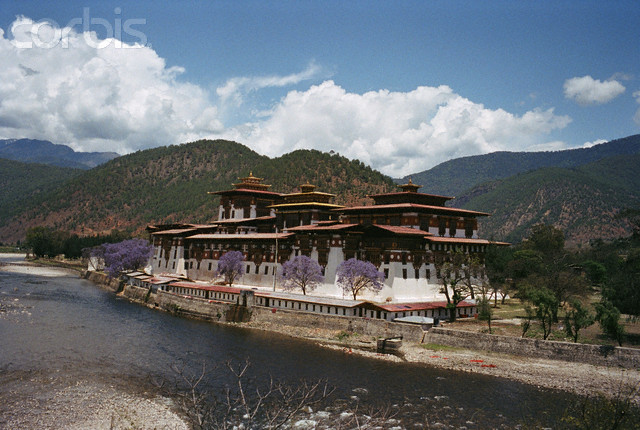|
 Jalpaiguri derives its name from the olive
fruit, which is locally known as ‘jalpai’ – it literally means
a place where olives are found abundantly. Its name is also associated with Lord
Shiva who is also known as Jalpesh, the presiding deity of the region. Jalpaiguri
shares the northern part of West Bengal and is close to international borders with
Bhutan in the north and Bangladesh in the south. It is bounded by the state of Assam
and Darjeeling district in the East and West. Jalpaiguri comprises chiefly of a
rural population, which is more than 80 per cent of its total population. The topography
of the land is cut across by rivers, rivulets and hills, and covered with tea gardens
and forests. It is a virtual cauldron of different ethnic races and tribes like
the Rabha, Toto, Metch, Santhals, Madasia and Oraons. Jalpaiguri derives its name from the olive
fruit, which is locally known as ‘jalpai’ – it literally means
a place where olives are found abundantly. Its name is also associated with Lord
Shiva who is also known as Jalpesh, the presiding deity of the region. Jalpaiguri
shares the northern part of West Bengal and is close to international borders with
Bhutan in the north and Bangladesh in the south. It is bounded by the state of Assam
and Darjeeling district in the East and West. Jalpaiguri comprises chiefly of a
rural population, which is more than 80 per cent of its total population. The topography
of the land is cut across by rivers, rivulets and hills, and covered with tea gardens
and forests. It is a virtual cauldron of different ethnic races and tribes like
the Rabha, Toto, Metch, Santhals, Madasia and Oraons.
Major rivers that runs across the district are the Teesta, Torsa, Jaldhaka, Raidak
and Sankosh.
 Jalpaiguri has great tourism potential which
still lies untapped; the wild currents of Teesta, Torsa and Sankosh asserting its
way through the gorges; vast stretches of wilderness with the backdrop of the Himalayas;
rolling acres of tea estates and colorful tribal peoples makes it an ideal place
for holiday makers and adventure lovers. Jalpaiguri has great tourism potential which
still lies untapped; the wild currents of Teesta, Torsa and Sankosh asserting its
way through the gorges; vast stretches of wilderness with the backdrop of the Himalayas;
rolling acres of tea estates and colorful tribal peoples makes it an ideal place
for holiday makers and adventure lovers.
The little town of Jalpaiguri has more or less survived being bitten by the commercialization
bug unlike some cities and towns of North Bengal. Its beauty lies in its serenity,
green parks and the relaxed way in which people go about their day-to-day life.
The look and feel of the town belies the fact that it is a great seat of learning
and education in North Bengal. It boasts of a reputed Law College establishment
and Pharmacy Institute; large numbers of people are well educated. Recently, Jalpaiguri
Court won the prestigious privilege of hosting the High Court Circuit Bench beating
Siliguri Court in the run for the same.
If Siliguri is known for its commercialization and economic development, Jalpaiguri
has a unique identity of its own in the cultural, educational and social map of
North Bengal.
Places of interest
Jalpesh Siva Temple – Located 3 km from Mainaguri and 15
km from Jalpaiguri. A famous shrine dedicated to Lord Shiva, the presiding deity
of North Bengal. Every year in the Hindu calendar month of sawan (15 July-15 August)
thousands of devotees throng the Jalpesh Temple and a large fair is organised for
a month. Devotees collect water in vessels from the river Teesta after offering
puja and walk barefoot towards the temple, which is 15 km from the river.
 Tribal culture with its folk
dance, drama, songs and folk lore is an integral part of the culture of the region.
The tribal communities of Raj Bangshi, Mech, Raba, Toto, Limboo, Lepcha and the
Bengali and Nepali community populate the region and provide a rich flavor to the
rich cultural diversity of Jalpaiguri. Tribal culture with its folk
dance, drama, songs and folk lore is an integral part of the culture of the region.
The tribal communities of Raj Bangshi, Mech, Raba, Toto, Limboo, Lepcha and the
Bengali and Nepali community populate the region and provide a rich flavor to the
rich cultural diversity of Jalpaiguri.
Jalpaiguri was covered with thick forests and the tribal people lived an isolated
existence until the British people invaded their space, followed by the Bangladeshis;
the British cleared the land for tea estates while the Bengali people after the
partition of Bangladesh came here and were actively involved in agriculture. The
British were also responsible for bringing another set of tribes called the Madeshia,
Uraons, Munda and Nageshia from Chotanagpur to work in the
 plantations; these
tribes since have lived in harmony with the other communities of North Bengal. plantations; these
tribes since have lived in harmony with the other communities of North Bengal.
The majority of people in Jalpaiguri belong to the Bengali community followed by
the Rajbangshi tribe. The numbers of tribes in these areas have dwindled over the
years because they have largely relocated themselves to bigger towns and cities
in search of work and livelihood.
Many festivals among the Bengali community and Rajbangshi are similar like the Durga
Puja, Kali Puja, Manosha Puja etc. On the occasion of Manosha Puja – worship
of the serpent Goddess – village fairs, dramas and festivals are held and
villagers pray for good crops.
Folk drama of Jalpaiguri includes the ‘chor chunni’ and ‘dham
gaan’ is a popular folk song. Rajbangshi’s most popular songs are the
‘Bhawaiya Gaan’ – devotional and love songs – which is very
famous in Bengal.
|